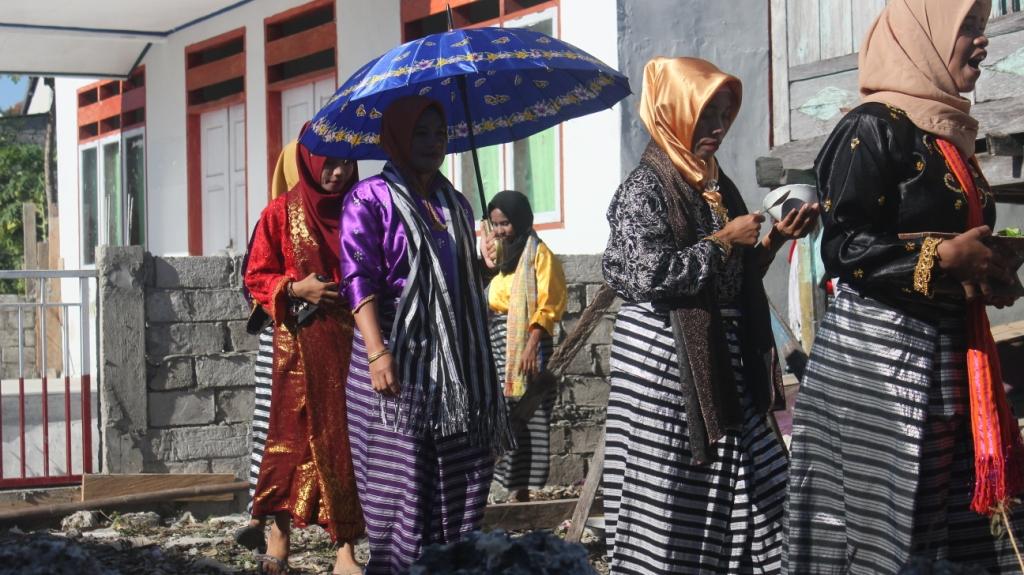Besides being blessed with beautiful nature, Indonesia also has a very diverse culture. Traditional customs are still deeply embedded throughout Indonesia. Both in small islands and densely populated islands. Islands included in 3T areas (underdeveloped, outermost, and underdeveloped) are sometimes always distinctive and unique from their customs. The island touched less by the advancing world, often become objects of cultural learning activity. Not only studied, but a preservation effort is always made by people who care about Indonesia.
Indonesia is a region with high heterogeneity and multiculturalism. From numerous islands to those tribes living in areas far from modern life. In facing the development of times accompanied by global competition, the awareness of cultural preservation as national identity needs to be emphasized.
Siompu Island
Siompu Island, a small island where the 2019 Nusantara Jaya Expedition Team Universitas Airlangga carried out the community service program as the Ministry of Maritime Affairs Coordinating Ministry, is one of the islands with cultural wealth. Siompu Island, is one of the small islands in South Buton Islands with a population around 12,000.
Siompu Island has many traditional customs such as marriage, celebration, dance and Kalili. Some of them still exist implemented by the residents, but some have also fused because there are no successors who study them. Such as Linda Dance, it is a traditional ceremony held every three years, but unfortunately this tradition has faded. Unlike Kalili Tradition, which is still implemented until now.
Kalili Tradition
It is a tradition followed by newly married couples with an intention to have children. Tradition is maintained with the belief that if it is not followed, this tradition will bring a bad impact for their children in the future, i.e. children who are disabled and often sick. But for the record, this tradition must be implemented by people who are able (capable of both material and financial). A tradition that requires both material and financial ability to uphold, that tradition will easily disappear in the long run. It happens because there are no supports from several stakeholders from the low-economic population.
Furthermore, public exposure in the era of globalization will lead to the fusion of cultures in the region. Technology that made its way to reach remote areas, will quickly displace the love of culture instilled by their ancestors. So, a sense of caring for the preservation of culture by the community needs to be improved.
Cultural Preservation
The preservation of a culture is influenced by many factors including the presence of certain figures, community loyalty to the culture, the region, and the diversity of the community. So, aside from the individual regions themselves, stakeholder participation is also considered important as a key to preservation.
Linda dance is extinct, because there is no successor who is able to do it. Thus, the formation of a local youth community is an effective solution. Dance community with expert guide, the community can teach the dance to youth and children. In fact, youth and children are the original successors of the ancestral heritage which is the wealth of the region. Procurement of extracurricular learning methods can also be done at schools. From elementary to high school, this tradition can be included in the form of learning exercises. In addition to preserving culture, this can also foster interest in the importance of education for children.
The Kalili tradition, is also at risk of extinction. It is constrained by the low economy of economic society. Stakeholders such as the government must also contribute to cultural preservation. Siompu Islands, has abundant natural resources. The tourism potential is huge, the clear and beautiful sea can improve the economy in the region. By contributing to the utilization of natural resources to low economic communities, the tradition can be carried out by the community regardless of social class. The entire community from various elements, can indirectly participate in efforts to preserve regional culture.
Maintaining culture is one thing that is quite difficult to do. However, with the preservation of knowledge, insights, habits, and attention of the next generation, the traditions that have been established by the ancestors will not fade uselessly. Every tradition has its essence and good philosophy, that is the positive thing that must be promoted by the community from all elements. No matter inside or outside the island, cultural heritage must still be preserved as the nation’s identity.





